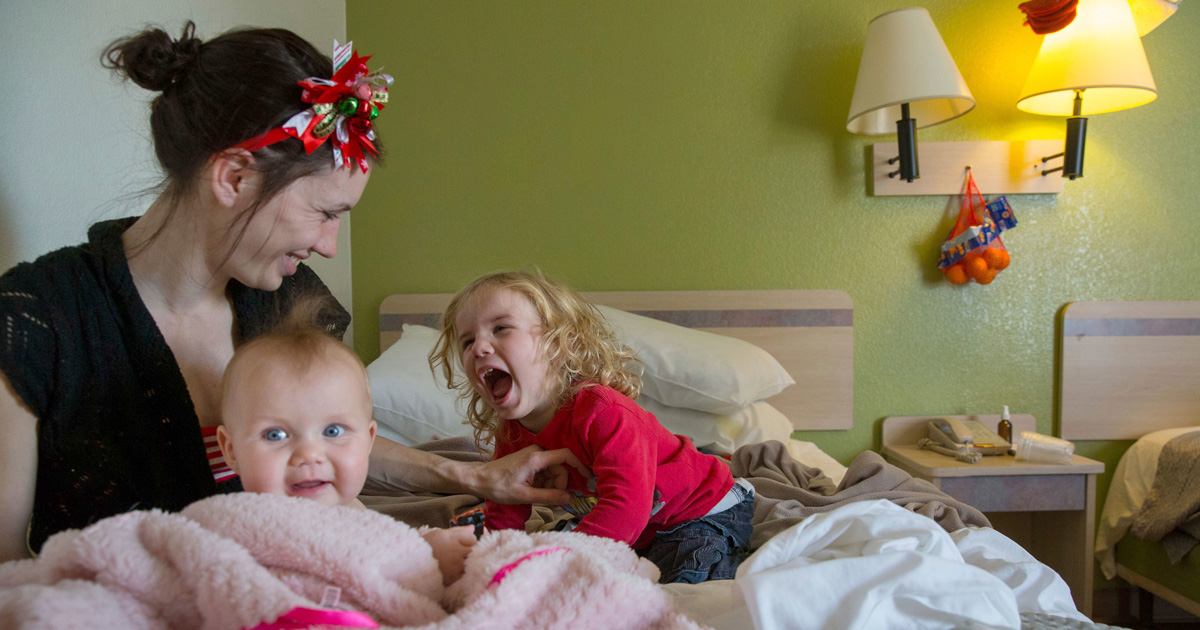Over a five-year period, the number of families experiencing homelessness (living in shelter, transitional housing, or unsheltered situations) on a single night decreased by 21 percent. Families experiencing unsheltered homelessness declined by more than half.
Family homelessness did not decline due to improved housing markets. A new report released by the National Low Income Housing Coalition clearly demonstrates that housing costs far exceed what low-income families can afford nationally. As a result, low-income families continue to face housing instability due to the affordable housing crisis: including living under threat of eviction, in doubled up situations, or even experiencing housing crises that compel them to turn to emergency shelters for a place to stay.
Family homelessness declined due to changes in how localities respond to family homelessness. Increasingly, when families become homeless, there are more tools to help them reconnect to housing than in previous years. And this has translated into fewer families experiencing homelessness on any given day.
Uneven Progress Across States
The national decline in family homelessness demonstrates that it is possible to reduce family homelessness, even in exceptionally tight housing markets. A new data source focusing on states captures key indicators on family homelessness and demonstrates wide variation in what is available at the state level to help families in crisis and what is available to help them reconnect to housing.
The data resource demonstrates that some states and localities have a surplus of temporary housing (emergency shelter or transitional housing) for families. In short, they have MORE units of temporary housing than there are families experiencing homelessness (even in places with unsheltered families).
There are also significant differences across states in rapid re-housing investments. Some states and localities have augmented federal funding to re-house families, using Temporary Assistance for Needy Families (TANF) and other funding streams, to significantly expand rapid re-housing capacity to reduce family homelessness. Other states and localities have invested far less.
Rapid Re-Housing
Rapid re-housing is an intervention specifically designed to help minimize the time families spend homeless by providing them the support they need to quickly secure housing. The intervention includes housing search and landlord negotiation assistance; short-term financial assistance to help families move immediately into housing; and case management services designed to help families stabilize in their new home.
Rapid re-housing provides a response to family homelessness that makes the entire homeless service system work better.
With rapid re-housing, families don’t have to wait until they earn enough to secure new housing before exiting shelter. They don’t have to navigate the housing market on their own. They have help stabilizing in their new homes. With rapid re-housing, families spend less time homeless and, as families exit homelessness more quickly, temporary housing resources are freed up to assist other families in crisis.
Between 2013 and 2018, investment in rapid re-housing has grown five-fold. Each year, more families than the year before receive help to quickly secure housing and escape homelessness with rapid re-housing support. This has contributed to reductions in family homelessness.
Nationally, there are resources to provide rapid re-housing to approximately one third of the nearly 150,000 families who will enter a homeless service program over the course of a year. More resources are needed to further progress in ending family homelessness and to promote access to assistance across and within all states.
Looking Ahead
While there are clear signs of progress in ending family homelessness, there are also clear indicators that there is much more work to be done.
Without significant new investments in affordable housing, the work of homeless service providers and systems will become ever more challenging. State leaders can play a critical role in supporting and strengthening effective interventions to reduce family homelessness and promoting access to the help families need.
Over the next few months, the National Governors Association (NGA) Solutions: Center for Best Practices and the Alliance will be working together to elevate promising state responses to family homelessness. By facilitating the exchange of information between innovative state leaders, we hope to advance progress in making child and family homelessness rare, brief and nonrecurring.

